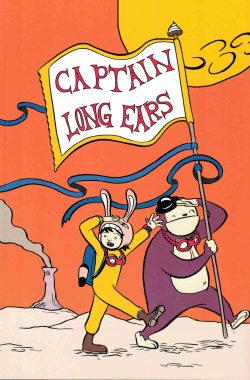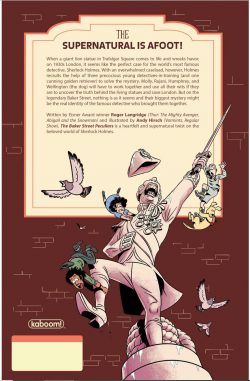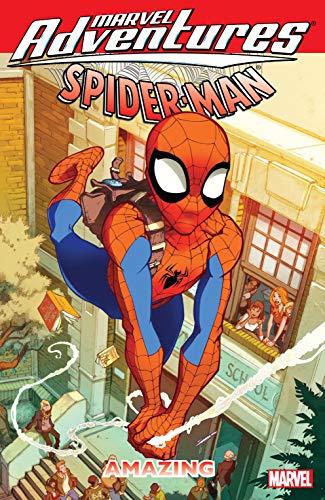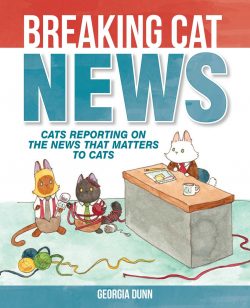
By Maurice Dodd & Dennis Collins (Daily Mirror Books)
ISBN: 0-85939-031-4 (PB)
I plug these little chaps – and the wonderful feature they crafted – every few years because the work is wonderful and quintessentially British. I so wish they were still around to take aim at today’s governments, autocrats, too-common people and general discommodiousness as well as helping us accommodate the impending end of the world with a smile…
Although written almost entirely by Maurice Dodd throughout its 48-year history, the forgotten National Treasure that is The Perishers was actually created in 1957 by artist Dennis Collins, writer Bill Witham (who went on to huge success with uniquely innocent everyman Useless Eustace) and cartoon editor Bill Herbert.
The daily tribulations, ruminations, exploits and misadventures of a bunch of typical kids (for the latter half of the 20th century at least) was first published in the Manchester edition of The Daily Mirror in February 1958. After only a couple of frankly mediocre months the wacky adventures of Maisie & Marlon were withdrawn and retooled.
Jack-of-all-trades, budding artist and advertising whiz-kid Dodd was then approached by ex-paratroop service comrade and drinking buddy Herbert. The freelance designer jumped at the chance to reinvent the characters in what was a meandering but beautifully illustrated, all-ages feature simply stuffed with untapped potential.
Drawing on his own life (he would describe it as “shamelessly pilfering”), Dodd created a plethora of new characters, animal and human – although with this strip distinctions are loose and hard to defend – and rescued an early 1958 casualty in the unkempt and ill-maintained person of laconic orphan and philosophical dilettante Wellington.
This bewildered and ever-anxious symbol of the post-war era was a street urchin living on his wits but still attending school and enduring all the daily trials and indignities of British youth.
Relaunched in October 1959 in London and national editions, the revamped Perishers strip quickly caught on to become a morning mainstay for generations of Brits, blending slapstick and surreal comedy with naive charm, miniaturised modern romantic melodramas (Maisie loves Marlon, Marlon loves fashion and “inventing”, and Wellington loves sausages), liberally laced with sardonic cultural commentary. Particularly rewarding was a continuing and wonderfully twisted faux misperception of contemporary politics and the burgeoning influence of advertising and commercial media.
Even in its earliest days the strip was superbly illustrated, conjuring up in a few judicious lines and cannily applied grey tones a communal urban wonderland we all knew as kids: the familiar post-war melange of shops and streets, building sites and overpasses, alleys and parks and fields where we could get on with our adventures and no adults could interfere or spoil the fun. The unsavoury old git in me still hungers in absentia on behalf of the youth of today who will never experience such freedom without being labelled “neglected”, “at risk” or possibly just “feral”…
Here the primary protagonists are Wellington and Boot, his old English Sheepdog (sort of: the wily, hairy chancer and raconteur considers himself a Manorial Milord “sufferin’ under the curse of a Gypsy Wench”). They are ably unsupported by the formidable Maisie, a thoroughly modern miss torn between self-delusion that the boy of her dreams feels likewise; sweets, an unsurpassed capacity for greed and unrelenting violence, and a tremendous unslaked passion for the aforementioned Marlon, who she thinks is what she wants. And sweets.
Cool, suave and debonair are just three of the many, many words Marlon doesn’t know the meaning of, but lots of girls at school fancy him anyway. If he grows up, he wants to be a brain surgeon or a bloke wot goes down sewers in great big gumboots…
Being on his own and fiercely independent, Wellington takes every opportunity to support himself with sordid scavenging and shoddy schemes – usually involving selling poorly constructed carts and buggies to Marlon who has far more money than sense. To be honest, Marlon has more noses than sense…
Maisie is a shy beautiful maiden waiting for her true beloved to sweep her off her feet – and if he doesn’t, she gives him a thorough bashing up and nicks his sweets…
Other unreasonable regulars introduced here include Baby Grumplin’ – Maisie’s toddler brother and a diabolical force of nature; Plain Jane – a girl who asks too many questions, and the dapper Fiscal Yere: smugly complacent go-getting son of a millionaire and another occasional sucker for Wellington’s automotive inexpertise. Kids like him are what made today’s world what it is…
On the anthropomorphic animal front, extremely erudite Boot regularly encounters stroppy ducks, militant squirrels, socialist revolutionaries Fred the Beetle and his long-suffering wife Ethel, South Asian bloodhound/journalist B.H. Calcutta (Failed) and, latterly, a nicotine-addicted caterpillar who stunted his growth and became Fred’s inseparable comrade in the struggle against canine oppression. The little Trot is also an implacable rival for any food or dog-ends the Bolshevistic bug might find…
Notable moments in this madcap melange include: Wellington gentrifying out of the large concrete pipe he used to live in and taking up residence in an old railway station abandoned after the Beeching Cuts decimated the train infrastructure, and the first couple of kids-only, unaccompanied fortnightly camping holidays to the seaside (oh, such innocent times!).
Here, they encounter sun, surf and the rock-pool crabs who worship the uncannily canine “Eyeballs in the Sky” which annually manifest in their isolated “Pooliverse”…
Utterly English, fabulously fantastical and resoundingly working-class, the strip generated 30 collections between 1963-1990, 4 Big Little Books, 5 novels and 2 annuals as well as an audio record and in 1979 an immensely successful animated TV series.
The tome under review here was released in 1974; the first of a series of extra-sized recapitulations, containing most of the contents of the first four Perishers books (spanning 1959-1965). It superbly sets the scene for newcomers with a glorious extravaganza of enchanting fun and frolics, liberally annotated by Dodd himself. Dennis Collins magnificently and hilariously illustrated the strip until his retirement in 1983, after which Dodd himself took up the pens and brushes. Eventually artist Bill Melvin took over the art chores whilst Dodd scripted until his death in 2006. Once the backlog of material was exhausted The Perishers finished on June 10th of that year.
Soon after, The Mirror began reprinting classic sequences to the general approval of everyone, so perhaps it’s not too much to hope that eventually – or even SOON – all those classic collections will be available…
Quite frankly, it’s what we need and what I deserve…
© 1974 IPC Newspapers Limited.















